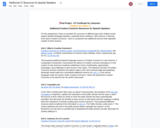
An annotated list of resources of different types to support Spanish-language speakers in learning more about Creative Commons.
- Subject:
- Applied Science
- Information Science
- Material Type:
- Lesson
- Author:
- Charlotte Ford
- Date Added:
- 04/21/2021

An annotated list of resources of different types to support Spanish-language speakers in learning more about Creative Commons.
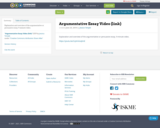
Explanation and overview of the argumentative or persuasive essay. 9-minute video.
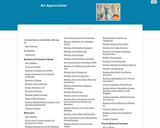
This course is particularly focused on helping you develop visual literacy skills, but all the college courses you take are to some degree about information literacy. Visual literacy is really just a specialized type of information literacy. The skills you acquire in this course will help you become an effective researcher in other fields, as well.

What’s all the BUZZ ABOUT Creative Commons, is an introduction and overview of the origins and uses of Creative Commons Licensing and Open Education Resources. This presentation thematically is centered around photographic and audio works of Bees resourced from the Commons.
The comparative choice of Bees is intended to liken the role which Creative Commons serves in today's contemporary legal and digital online ecosystems to the role which Bees serve in the natural world as pollinators.
This PPT Presentation presents
Introduction to Creative Commons
The Legal Foundations of Creative Commons Licensing
Identifying & Defining CC Licenses
Defining, Creating and Sharing OER-Open Educational Resources
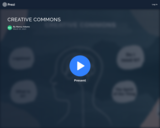
This a BRIEF overview of Creative Commons licensing for my colleagues (administrators, faculty, and staff) at Central Alabama Community College. This learning opportunity was funded by a grant from ACHE & ACCS, and due to current policy regarding copyright, the College will have to authorize permission to use, edit, &/or redistribute. It is hoped that these policies are being re-visited for the betterment of OER creation and use in Alabama.

This textbook is meant for first year English Composition Courses. The text covers the essentials of composition and rhetoric in a recursive manner and introduces research skills.
When you are eager to get started on the coursework in your major that will prepare you for your career, getting excited about an introductory college writing course can be difficult. However, regardless of your field of study, honing your writing skills—and your reading and critical-thinking skills—gives you a more solid academic foundation.
In college, academic expectations change from what you may have experienced in high school. The quantity of work you are expected to do is increased. When instructors expect you to read pages upon pages or study hours and hours for one particular course, managing your work load can be challenging.
The quality of the work you do also changes. It is not enough to understand course material and summarize it on an exam. You will also be expected to seriously engage with new ideas by reflecting on them, analyzing them, critiquing them, making connections, drawing conclusions, or finding new ways of thinking about a given subject. Educationally, you are moving into deeper waters. A good introductory writing course will help you swim.

This Course Review and Approval Tool (CRAT) is the “workbook” that faculty use to design and plan their course with best practice in mind that addresses: curricular alignment with objectives, learning activities, practice assignments and quizzes, and higher-stakes assessments. The 10-tabbed spreadsheet is a digital multitool that centralizes and aggregates the entire course development, review, and approval processes. This tool is used to plan the course prior to its build in the Learning Management System (LMS) as part of an eight-module LMS-based support course that steps faculty through the process and gives them a learner-based perspective on how the tools work together and the features available to them for use in their own courses.
In addition to facilitating communication with multiple stakeholders who may share the document, the process MODELS a self- and peer-reviewed authentic assessment strategy that adapts itself well to any curriculum, whether for training, orientation, or credit-bearing coursework. It supports and models features of an intersection of agile design, backward design, and reflective practice in addition to encouraging authentic and formative assessment strategies. Providing all necessary documents in one easily accessed and bookmarkable document facilitates the process of course development by providing both a model and a touchstone for faculty who are often overwhelmed with the complexity of the process of developing or redeveloping courses regardless of delivery modality. While most of our faculty came to the program because of requirements for online or hybrid learning, most have exclaimed happily that they now apply this process to all of their courses and their learners have shown appreciation for the clarity and consistency that the tool promotes and supports.
The document also includes a dynamic link to future updates for anyone who adopts it and wants to follow its evolution. Feel free to adapt!
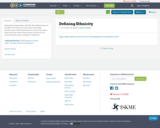
Embedded mediamakers with the Race/Related team at the New York Times ask each other potentially awkward race-related questions as a way to start more open, personal conversations about race across our racial and ethnic lines.
example of definition

Greek Cypriot-American model Sophia Hadjipanteli doesn't care about what people think. She wears a unibrow proudly, as part of her heritage and style.
example of definition
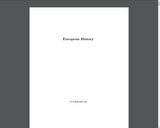
A basic outline of Western Civilization from the Renaissance to modern times.
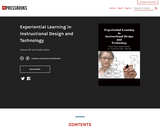
The purpose of this text is to provide students with an introduction to the field of Instructional Design and building upon skills that will help the novice designer become more effective in their professional career. This text will go beyond theory to discuss such topics as recommended skillsets and traits for designers, the importance of cultivating strong communication and leadership skills and how to incorporate emotional intelligence into your wheelhouse of professional skills. In addition, tips on the management of projects as well as the instructional design process will be discussed. In an effort to broaden the concept of the instructional design profession, you will find sections devoted to instructional design in various professional venues, (i.e., consulting, educational {higher education and K-12}).
In the educational realm of instructional design, one current topic among designers is how to incorporate openly licensed material into instructional texts. We will provide a section on open educational resources and licensing to assist you in becoming knowledgeable on best practices and dealing with cutting edge initiatives in the educational world.
Effective instructional designers should be able to speak comfortably in public in various venues whether it is a business meeting, training a small group of individuals, or, presenting at a large conference. For an instructional designer, it is important to hone these leadership skills and prepare yourself for the inevitable public speaking situation. This text will provide information on how to improve upon your public speaking skills.
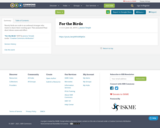
Snooty birds are rude to an awkward stranger who wants to share their roosting spot. This animated Pixar short shows cause and effect.
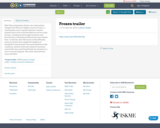
Walt Disney Animation Studios, the studio behind "Tangled" and "Wreck-It Ralph," presents "Frozen," a stunning big-screen comedy adventure. Fearless optimist Anna (voice of Kristen Bell) sets off on an epic journey—teaming up with rugged mountain man Kristoff (voice of Jonathan Groff) and his loyal reindeer Sven—to find her sister Elsa (voice of Idina Menzel), whose icy powers have trapped the kingdom of Arendelle in eternal winter. Encountering Everest-like conditions, mystical trolls and a hilarious snowman named Olaf, Anna and Kristoff battle the elements in a race to save the kingdom.
This trailer demonstrates cause and effect.

This OER SPH 106 course template was developed by Ms. Patricia Connell (faculty) in collaboration with Dawn Dunaway (Instructional Designer), as part of the ACHE OER Grant program. Both course developers are from Gadsden State Community College. Ms. Connell is an experienced communications instructor with over 35 years of experience teaching students the fundamentals of communication. Ms. Dunaway is an Instructional Designer, certified Quality Matters Master Course Reviewer, and Creative Commons Certified Educator with over a decade of experience in andragogy and course development. The combined experience and skill set of the creators of this SPH 106 OER course ensure grounded confidence that you will provide a high-quality learning experience for your students using this course design framework and instructor’s guide.
Using a fully designed course template allows you to focus on providing teacher presence and Regular Substantive Interaction (RSI) with your students throughout the course. This Quality by Design course template includes best practices based on the Quality Matters Rubric Higher Ed. Rubric, and Open SUNY Quality Course Review Rubric (OSCQR Rubric) standards to ensure that both you and your students focus on the course content and learning - and not course design. Simplicity and consistency in this course provide high-quality learning experiences for your students that are easy for students to successfully achieve the learning objectives, and easy for you to instruct. The purpose of this guide is to provide you with step-by-step support throughout your SPH 106 OER Quality by Design course template Instructor experience. Course Learning Activities and Assessments are aligned with the Alabama Community College System (ACCS) Transfer Syllabus for Fundamentals of Communication (SPH 106). Course Design is aligned with the Quality Matters and Online SUNY Course Quality Review Rubric standards for embedding Regular Substantive Interaction into the course design.

This resource provides several options for organized pre-writing of narrative essays.

If you were a government official trying to raise revenue, who would you tax? Pick whether to tax cigarettes, luxury goods, or oil and gas in this interactive game and Professor Art Carden of Samford University will explain how the market will react.

This NPR report discusses the current definition(s) of sexual harassment.
professional example of definition
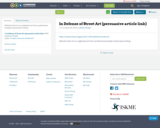
defends street art as a legitimate art form; professional example of persuasive writing

In this video, Professor Art Carden of Samford University simplifies the laws of supply and demand into short haikus.
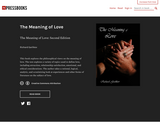
This book explores the philosophical views on the meaning of love. The text explores a variety of topics used to define love, including attraction, relationship satisfaction, emotional, and ethical considerations. The author takes a rational, logical, analytic, and scrutinizing look at experiences and other forms of literature on the subject of love.